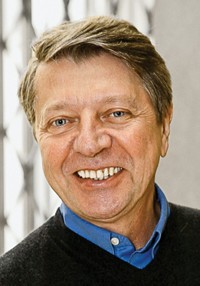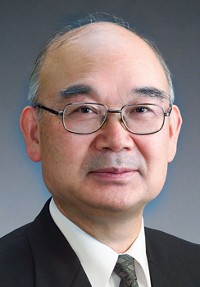Advertisement
Grab your lab coat. Let's get started
Welcome!
Welcome!
Create an account below to get 6 C&EN articles per month, receive newsletters and more - all free.
It seems this is your first time logging in online. Please enter the following information to continue.
As an ACS member you automatically get access to this site. All we need is few more details to create your reading experience.
Not you? Sign in with a different account.
Not you? Sign in with a different account.
ERROR 1
ERROR 1
ERROR 2
ERROR 2
ERROR 2
ERROR 2
ERROR 2
Password and Confirm password must match.
If you have an ACS member number, please enter it here so we can link this account to your membership. (optional)
ERROR 2
ACS values your privacy. By submitting your information, you are gaining access to C&EN and subscribing to our weekly newsletter. We use the information you provide to make your reading experience better, and we will never sell your data to third party members.
Materials
ACS Award In Applied Polymer Science
Sponsored by Eastman Chemical Co.
by Alexander H. Tullo
January 17, 2011
| A version of this story appeared in
Volume 89, Issue 3

To say that Krzysztof Matyjaszewski, J. C. Warner University Professor of Chemistry at Carnegie Mellon University, is influential may be an understatement. His 1995 paper in the Journal of the American Chemical Society outlining the process of atom transfer radical polymerization (ATRP) and his first review on ATRP have been cited more than 2,300 and 2,700 times, respectively, making him one of the world’s most referenced chemists.
ATRP is a type of controlled/living radical polymerization. The technique uses a transition-metal complex, normally copper-based, to act on an alkyl halide to form a free radical. Monomers such as styrene or methacrylates combine with the generated radical while creating a new free radical, which combines with additional monomers in an iterative process to build a polymer. At a designated moment, the catalyst caps off the radical with the halogen atom, returning the intermediate to the dormant state.
“The challenge in radical polymerization is that the life of the radical, during which the polymer is formed, is very short, essentially a second or so,” Matyjaszewski says. The ATRP technique expands that time 1,000-fold through the insertion of the dormant states. This allows scientists to manipulate the polymer synthesis by adding different monomers or adding functionality to the polymer chains.
This pinpoint control of polymerization has the potential to yield countless new materials. These include block/graft/gradient copolymers that can change properties when stimuli such as temperature, light, or pH are applied, leading to smart/responsive polymers. Polymer architecture can include bottle brushes, stars, blocks, grafts, and many others, paving the way for many applications, including self-plasticized PVC, supersoft elastomers, thermoplastic elastomers, sealants, or ingredients for health and beauty products.
A consortium of about 40 companies that have already signed a dozen licenses with Matyjaszewski is developing applications employing ATRP in specialty applications such as adhesives, sealants, pigment dispersants, and chromatographic packing.
“ATRP is among the most rapidly developing areas of polymer science and chemistry,” says Guy C. Berry, an emeritus professor of chemistry and polymer science at Carnegie Mellon. “The main reason for this explosive development is the simplicity of ATRP, and the unusual power to prepare tailor-made macromolecules for many special applications, making it attractive for industrial practice.”
Matyjaszewski, 60, earned a B.S. and an M.S. in chemistry from the Technical University of Moscow. In 1976, he earned a Ph.D. from the Polish Academy of Sciences. In 1985, he joined the faculty of Carnegie Mellon, where he headed the chemistry department from 1994 to 1998. His work, before the ATRP technique, focused on ionic polymerization and inorganic polymers.
He has received many accolades, including a Presidential Green Chemistry Challenge Award in 2009, largely because of his work in using reducing agents such as ascorbic acid to diminish by 1,000 times the amount of transition-metal catalyst needed in the ATRP reaction and for his efforts in using ATRP in aqueous solutions. He has received five honorary degrees from European universities. He is a member of the U.S. National Academy of Engineering and the Polish Academy of Sciences. He has also received several awards from ACS, including the Award in Polymer Chemistry in 2002.
Matyjaszewski will present the award address before the Division of Polymeric Materials: Science & Engineering.




Join the conversation
Contact the reporter
Submit a Letter to the Editor for publication
Engage with us on Twitter